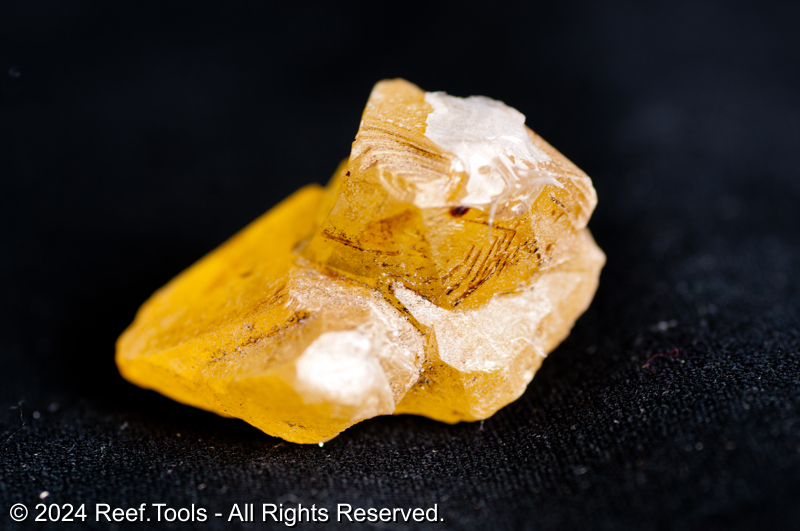
Sulfur (S)
Chalcogens
Atomic Number: 16
Last Reviewed: 12/15/2024
Sulfur is an essential macronutrient present in seawater, primarily in the form of sulfate ions (SO₄²?). It plays a fundamental role in the biochemical cycles of reef ecosystems, contributing to the synthesis of amino acids, vitamins, and other biomolecules. In reef aquariums, sulfur is part of critical chemical interactions that influence nutrient cycling and water quality.
Natural Seawater Levels
Sulfate (SO4²?) is the second most abundant anion in seawater, with concentrations of approximately 2,700 mg/L. (Millero, 2006)
Risks
Deficiency:
- Sulfur deficiency is highly unlikely in reef aquariums due to its abundance in seawater and lack of significant biological depletion mechanisms.
Excess and Toxicity:
- Hydrogen Sulfide Formation: In low-oxygen (anaerobic) zones, sulfate can be reduced to hydrogen sulfide (H2S), a toxic gas harmful to marine life. This typically occurs in poorly maintained or compacted substrates. (Fenchel & Jørgensen, 1977)
Relevancy
Biological Importance:
- Sulfur is essential for marine life, forming part of the amino acids cysteine and methionine, as well as vitamins like biotin and thiamine. These are crucial for protein synthesis and metabolic processes. (Kiene et al., 2000)
Sulfur Cycle in Reefs:
- In reef ecosystems, sulfur compounds are involved in microbial processes like the oxidation of sulfides and the reduction of sulfates. These interactions help maintain the chemical balance in sediments and water columns. (Jørgensen & Nelson, 2004)
Ocean Values
| Reference Name | Low | High | Optimal | Unit |
|---|---|---|---|---|
| Hawaii Ocean | 850.0000 | 950.0000 | 900.0000 | mg/L |
| Florida Ocean | 850.0000 | 950.0000 | 900.0000 | mg/L |
| Fiji Ocean | 850.0000 | 950.0000 | 900.0000 | mg/L |
Regional Variations
Sulfate concentrations in seawater are relatively consistent globally, with minor variations influenced by local environmental factors.
Dosage Recommendations
Target Level: Maintain sulfate concentrations consistent with natural seawater levels (~2,700 mg/L).
Adjustment: Supplementation is generally unnecessary; focus on preventing conditions that lead to harmful sulfur compound formation.
Handling
Testing: Testing for sulfate is unnecessary; focus on signs of anaerobic activity (e.g., odors or blackened substrate).
Intervention: Intervene only if anaerobic conditions are detected, by improving substrate aeration or cleaning.
Reef.Tools recommends: Maintain Sulfur (S) concentrations between 800.0000 and 1000.0000 mg/L.
References
- Jørgensen, B. B., & Nelson, D. C. (2004). "Sulfate reduction and sulfur cycling in marine sediments." Marine Geology. (DOI)
- Millero, F. J. (2006). "Chemical Oceanography." Marine Chemistry. (DOI)
- Fenchel, T., & Jørgensen, B. B. (1977). "Detritus food chains of aquatic ecosystems and the role of bacteria." Limnology and Oceanography. (DOI)
- Kiene, R. P., et al. (2000). "Sulfur biogeochemistry." Sulfur in the Biosphere. (DOI)
Difficulty
Rating: Easy
Sulfur is naturally abundant in seawater, requiring minimal intervention. However, preventing anaerobic conditions demands routine care and monitoring.
Categorization
Element Type: Non-metal
Role: Macronutrient
Not Usually Deficient
Sulfur is one of the most abundant elements in seawater, making deficiencies improbable.
Essential
Sulfur is a critical component of amino acids and vitamins necessary for the growth and health of marine organisms.
Aliases
Brimstone,Sulphur,Devil's Match,Pyrite,Fool's Gold